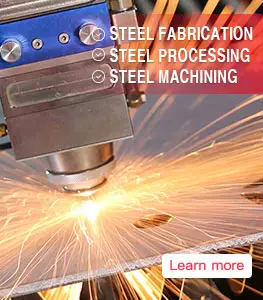Welcome to BBN Steel Materials Factory
ASTM A36 carbon steel vs EN10025 s275jr steel

ASTM A36 carbon steel and EN10025 S275jr steel are two popular steel materials used in different industries across the world. Both these materials have their own unique characteristics and properties that make them suitable for various applications. Although they share some similarities, they also have notable differences in their chemical composition, mechanical properties, and applications.
ASTM A36 is a low carbon steel material, and A36 carbon steel is widely used in construction, manufacturing, and other industries. Its relatively low carbon content makes it easy to shape and weld. It has excellent strength, toughness, and ductility, making it an ideal choice for structural applications. Additionally, it can withstand high temperatures and pressures without losing its strength. ASTM A36 steel is also highly corrosion-resistant, which makes it suitable for outdoor applications.
Mechanical properties of ASTM A36 carbon steel
- Tensile strength: 400-550 MPa
- Yield strength: 250 MPa
- Elongation: 20%
- Melting point: 1450°C (2642°F)
- Density: 7.85 g/cm3 (0.284 lb/in3)
EN10025 S275jr non-alloy structural steel is widely used in the construction industry. It is made up of low carbon steel and is commonly used in the form of steel plates, bars, and sections. S275jr steel has good machinability, weldability, and formability, which makes it easy to work with. It has a moderate strength and durability, making it suitable for structural applications.
Mechanical properties of EN10025 S275jr steel
- Tensile strength: 370-530 MPa
- Yield strength: 275 MPa
- Elongation: 22%
- Melting point: 1420-1460°C (2588-2660°F)
- Density: 7.85 g/cm3 (0.284 lb/in3)
Differences between ASTM A36 carbon steel and EN10025 S275jr steel
ASTM A36 carbon structural steel and EN10025 S275jr steel share some similarities, they have some notable differences in their properties and applications. Here are some of the differences between these two steel materials:
- Chemical composition: ASTM A36 contains higher amounts of carbon, manganese, phosphorus, and sulfur, while EN10025 S275jr steel has lower amounts of these elements. This difference in chemical composition affects their mechanical properties and makes them suitable for different applications.
- Tensile strength and yield strength: ASTM A36 steel has a higher tensile strength and yield strength than EN10025 S275jr steel. This makes it suitable for heavy-duty structural applications that require higher strength and durability.
- Elongation: ASTM A36 steel has a slightly lower elongation than EN10025 S275jr steel. This means that it is less ductile and more prone to cracking under stress or pressure.
- Applications: ASTM A36 steel is commonly used in the construction, manufacturing, and oil and gas industries for structures, pipelines, and machinery. EN10025 S275jr steel is primarily used in the construction industry for structures, bridges, and buildings.
.webp)
.webp)
.webp)
.webp)
.webp)
.webp)
.webp)
.webp)
.webp)



Leave a Message